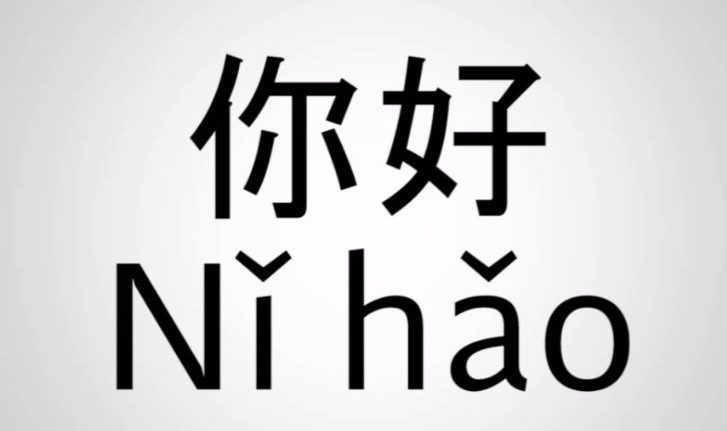-
The most commonly learned second language in Taiwan is English
-
In Chinese, the verb stays the same even if tenses are different
-
Chinese is the most commonly spoken language in the world
Language is the most important and basic aspect of human civilization; because of it, we have the ability to communicate with others, express thoughts and emotions, establish rules, and maintain our culture. In Taiwan, many parents send their children to learn plenty of languages so they get better job opportunities and have the chance to form cross-cultural friendships. The most commonly learned second language in Taiwan is English. In fact, every student is taught English from elementary school to high school. So what are the main differences between these languages?
1. Grammar
Grammar is the first thing we learn about a language because people from different places have different (or even opposite) logic and ways of speaking. Language learners often get confused about how to say a sentence correctly. Here are some examples:
Tenses
In English, you spell a verb differently because of the time in which the situation happened. There are differences between past, present, and future. In Chinese, the verb stays the same even though the tenses are different.
Single, Plural, Countable, and Uncountable
In English, you have to add -s or -es if the noun is plural and an -a or -an in the front of a single noun. In Chinese, it isn’t so complicated to change a noun from singular to plural; however, besides the amount, we still have to add a grammatical term called “classifier”. For example, instead of saying “some bread”, we say “some ‘slices’ of bread”. Almost every noun has a special classifier for itself, and this makes it very difficult for foreigners who want to learn Chinese.
Homophones
In English, there are very few homophones, for example, “there” and “their”. However, almost every character in Chinese have homophones, “一”, “依”, “醫”, “衣”, “揖”, “漪” and 40 more characters are pronounced “yi”. Chinese learners usually don’t understand how to choose the right word.
Sentence Patterns
Both English and Chinese use the “Subject-Verb-Object” system. However, in Chinese we usually put the place in the middle of the sentence while English puts it towards the end. Also, in English, using a pronoun as a subject or object can change the spelling. For example, “I” and “me”, “he” and “him”.
Tones
In Chinese, there are 4 tones for pronunciation, however, in English you can read a word/sentence pretty much whatever way you want. This is also pretty confusing.
2. Total numbers of speakers
Chinese is the most commonly spoken language in the world; more than one billion people (one sixth of humans on Earth) speak it. However, that’s because there are more people born in Chinese-speaking areas than English ones (almost 20 percent of humans are Chinese). In fact, far more people use (American) English as their second language (About 5.1 million, which is five times more than Chinese) since America has the most powerful economic and financial system in the world. This has changed in the past few decades though; more people started to learn Chinese because China’s international status is rising and it has improved a lot in diplomacy after the “reforming and opening up policy” during the 1980s.
3. History
The English language started with three Germanic tribes who invaded Britain during the 5th century. The tribes, who were named the Angles, the Saxons, and the Jutes, crossed the North Sea to invade England. After years and years of changing and developing, people started to speak modern English. Two of the most significant changes were the Great Vowel Shift (meaning to pronounce vowels shorter) and the Renaissance of Classical (creating new phrases and words). Later, a huge amount of new words were added to Modern English, arising from two principal factors: firstly, the Industrial Revolution and technology created a need for new words; secondly, because the British Empire covered almost one quarter of the earth’s surface, it adopted foreign words from many countries. Today, more people are speaking English and there are many varieties of it such as American English (which is used the most), Australian English, Canadian English, South African English, Indian English, and Caribbean English.
On the other hand, Chinese characters were carved on a turtle’s shell at first, used to record months and years. Later, the Chinese invented paper and more people were educated. Poems that have a standard format were very popular at that time, so scholars and poets wrote poems and books to express their feelings and emotions. After the Industrial Revolution, China started to interact more with the European countries and students went to study abroad. The students who studied abroad brought new thoughts and ideas (such as science and democracy) back to China, and they changed the official language from classical Chinese to modern Chinese, which is easier to read and write. There were also many new words translated from English to Chinese, and this is the language we speak today.
4. Writing
The writing system in English, which is a Latin phonetic alphabet, came from the Romans who copied the Greeks who copied the Phoenicians. This is why many of the European and American countries have similar languages. Speaking these languages can be easier because you can usually read a word based on phonics even if you don’t know the actual meaning.
The Chinese writing system is more complicated because every one of the characters is based on a picture. People drew the shape of creatures and simplified them into characters. Although the words were simplified already, they are still difficult to write – one character can contain up to 33 strokes.
—
So, which one is harder? I would say that English is harder to speak but easier to write. In English, there are so many tenses and so much grammar to pay attention to; but in Chinese, every character is so complicated. However, whether a language is hard or not still depends on the environment you live in and what language you already speak. In fact, almost every adult struggles to learn a second language, but to children, they learn all languages natively with about the same ease. Actually, the best way to learn a language is to do a huge amount of reading, writing, and speaking. When you get used to it and you can speak it fluently, that’s when you become a language master!





0 Comments